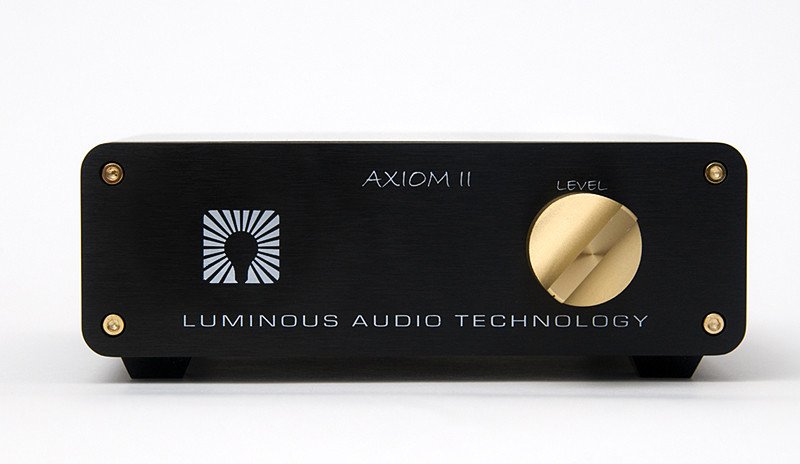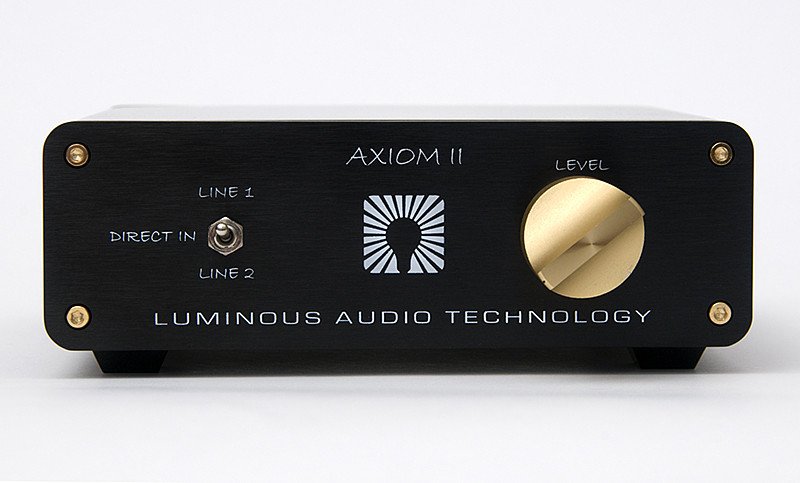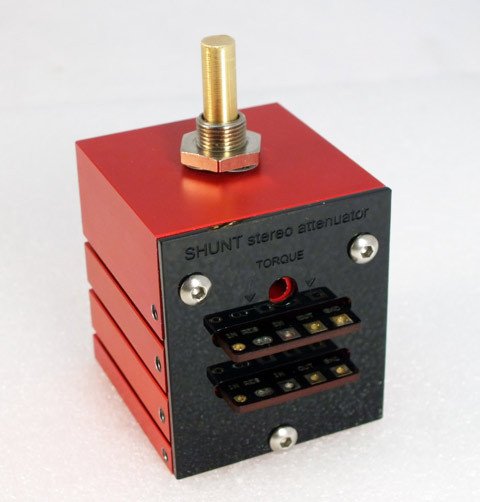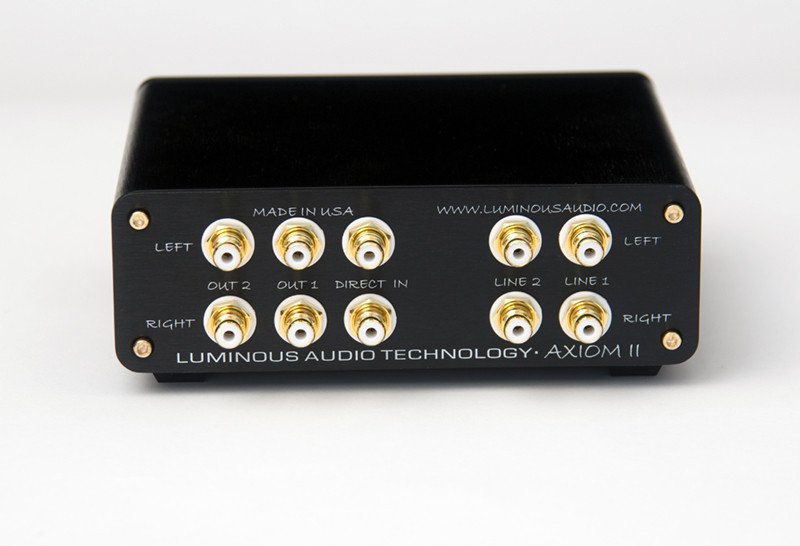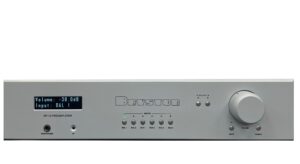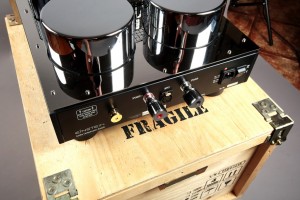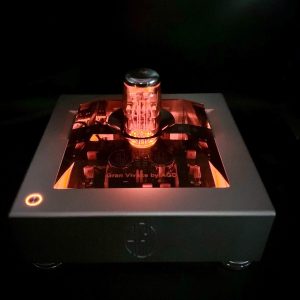Luminous Audio Technology Axiom II
"Life moves pretty fast. If you don't stop and look around once in awhile, you could miss it." – Ferris Bueller
Over the years, I have struggled with what I really want out of my stereo system. Is it mind-blowing aural pleasure that veers to the dark side of neutrality, or an experience that favors neutrality and a more transparent sounding presentation that leaves very little for the heart and more for the mind to process?
Technical excellence is nothing to sneer it; one should admire and respect the engineering that goes into a well-designed piece of equipment, even if the final sound does not engage your soul enough to purchase it. I have listened to a lot of equipment that falls into that category over the years and the darker side of my personality has rejected most of it because it just never made a connection.
That criticism can be levelled at equipment at both ends of the price spectrum.
Audiophiles tend to not lose their pants when a component commits what we refer to as an "error of omission," and I would rather listen to a pair of speakers or amplifier that doesn't do everything perfectly but connects the dots between musician and listener; the Wharfedale Diamond 10.1s, Rega Brio-R, Croft Phono Integrated, AudioQuest DragonFly, Magnepan Super MMGs, and the original Quad ESLs as a small cross-section of components that do that well.
Synergy is also incredibly important in the grand scheme of things; certainly more important than specs or how deep the soundstage goes. No component truly exists in isolation and how it behaves in the sandbox with the other children deserves more ink.
If the audiophile kingdom is going to attract a new audience, it has to do more of that; connect the dots for newbies who didn't grow up thinking that a stereo system was all that important. Teach them how to system build and not always with new gear. All of us got started with a hand-me-down, or a used piece we found at a dealer.
We also need to keep things simple. Large racks filled with separates and garden-hose audio cables are a deal breaker.
Having recently visited the brand new Sonos store in SoHo (that would be NYC for those in the flyover states), it's rather easy to understand why the "$20,000 or you're buying dreck" approach isn't working so well with millennials.
Had more than one conversation with customers who were looking for advice on adding a DAC or turntable/phono stage to the Sonos 5. You're welcome U-Turn, Schiit, and AudioQuest.
Connecting the dots…
Passive pre-amps are not very sexy. Boring might be a better word for them. They rarely take up a lot of rack space, and the audiophile kingdom has been somewhat critical of the category because some models have sacrificed dynamics in return for greater levels of transparency and a much lower noise floor.
Passive pre-amplifiers like the Luminous Audio Technology Axiom II with Walker modification do not require a power supply and can be customized to your specific power amplifier, DAC, and phono preamplifier.
LAT has a series of online questions before you place your order and they also allow you to select specific parts and the number and type of inputs and outputs.
For the purposes of the review, LAT built my sample around the AmpsandSound Bigger Ben SET power amplifier, Dynavector P75 MK III phono stage, Croft RIAA phono stage, and the two DACs that I used as my daily drivers; the AudioQuest DragonFly v1.2, and the Schiit Audio Uber BiFrost.
Having owned more than a few preamplifiers over the years; OCM, Copland, Blue Circle, Art Audio, Emotive Audio, Fi, Naim, and Croft, I was more than curious to get my hands on this highly regarded passive pre-amp and see how it compared.
The Axiom II is tiny. Not a dig by any means. It feels very solid when you remove it from its packaging; like a set of Global knives or a brand new Rolex.
The build and parts quality of the Axiom is excellent. The "Walker mod" includes a high-end 48-step Polish-made control that uses 1% resistors and a silver-plated rotary switch network. Internally, the Axiom II is wired with LAT's 6/9's ONO cast copper wiring.
To isolate the Axiom II, LAT uses a combination of home-brew Sorbothane feet and Iso-mat dampening sheets inside the chassis.
Very high quality Vampire pure copper RCA jacks were selected and they locked on tight with my various interconnects; AudioQuest, Nirvana, Audio Art, and Analysis Plus.
At close to $1000 (in this configuration), the Axiom II with Walker modification is not inexpensive for a passive preamp; especially one without an internal phono stage and remote option.
A passive preamplifier really shouldn't have any kind of sonic signature (its role is to act as merely a switching box and volume control for your sources) and for the most part, the Axiom II utterly vanishes.
The AmpsandSound Bigger Ben pushes out less than seven watts depending on your choice of output tube; which in this case was a pair of JJ 6550s, and I know from experience that it behaves well with an active line-stage such as the Croft.
During the review, I left the Bigger Ben connected to a pair of Ryan Speakers R610s, or a pair of Wharfedale Diamond 10.1s. Neither two-way is a difficult load and I've yet to have any issues with the Bigger Ben driving them in my 16 x 13 x 9 den.
Right off the bat, the Axiom II revealed that it doesn't impact the tonal balance of the amplifier/loudspeaker combination in any way. The Bigger Ben is a warm, punchy, and very open sounding SET amplifier that matches up well with the more neutral sounding Ryan R610s.
Synergy.
The Axiom II changed nothing in that regard. I could clearly distinguish the differences between the Croft and Dynavector phono stages; the Croft's more laid back nature offsets more forward sounding cartridges such as the Dynavector 10x5, or Ortofon 2M Black.
The 2M Black reveals more detail than the 10x5 and regardless of my musical selections; Nick Cave, Peter Gabriel, Kraftwerk, Jason Isbell, or Sarah Vaughn, the Axiom II did nothing to alleviate or change that.
When I streamed TIDAL from my MacBook Pro using Amarra playback software, it was not very hard to distinguish between the Schiit or AudioQuest DACs. The Schiit leaves more meat on the bones; especially with vocals or bass guitar, and the Axiom II did an excellent job of removing a layer of haze from the presentation. It had zero impact on the tonal balance, however, aside from making it easier to hear more detail and improving the clarity of vocals.
The Ryan R610s are relatively smooth sounding on top, but they are not as warm as the Wharfedale 10.1s, and the Axiom II did nothing to alter that.
Soundstage depth and width actually improved somewhat with the Axiom II in the signal path. My listening room is not very large and the limitations on loudspeaker placement force me to keep any loudspeaker 2-3' from the wall behind them, and 3-5' from the sidewalls. Soundstage depth, in particular, expanded on well-recorded jazz and classical albums.
Miles, Kenny, Eric, Art, and Thelonious, all benefitted from having the LAT Axiom II in the system. Greater clarity, more bite on top without any residual hardness, and a better sense of pacing as well.
The Bigger Ben is not a very powerful amplifier on paper, but it has excellent control of the lower octaves and a prolonged listening session with Kraftwerk, AC/DC, Daniel Lanois, and Peter Gabriel put to bed any fears that the Axiom II would restrict dynamics or loosen its grip on the Ryan's 6.5" woofers.
The Axiom II might not have as much flow as the Croft preamplifier, but it never sounds slow, and nor does it pop a valium into the mixture. The soul of the music is always there. The Axiom II does not make poor recordings sound any better either. If you're looking for a preamplifier that will paint pretty rainbows and insert smiling faces into each recording, the Axiom II will surely disappoint.
Transparency without stripping music of its gestalt? Bingo.
So who needs this?
The Axiom II passive line-stage is a very curious little fellow. It doesn't offer a remote option, phono stage, and has to be custom made for your specific power amplifier and source equipment. To move on without a second glance, however, would be a huge mistake.
If you don't plan on changing your system for the long haul and desire a preamplifier that will provide ample inputs, a volume control, and a reference quality level of transparency—you would be hard pressed to find anything as good as the Luminous Audio Technology Axiom II with Walker modifications. It gets out of the way and let's you connect the dots with your music.
Luminous Audio Technology Axiom II
Retail: $1000 as configured, base price is $499
Luminous Audio Technology




